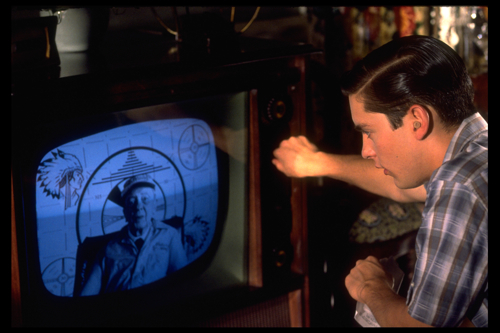By Jason Apuzzo. An exceptional documentary called The Surge: The Untold Story debuted at The G.I. Film Festival this past Sunday. Now that the film has shown at that festival, we’re screening the film here in its entirety at LFM.
Let’s begin with the title of this film. Why, first of all, is the extraordinary success story of our ‘surge’ in Iraq an ‘untold story’ to begin with? This story is ‘untold’ because the people primarily entrusted with shaping our national narrative – the mandarins of Hollywood – have been telling an entirely different story of late. They have been telling what might be termed the ‘Avatar-Green Zone story’ of defeat and demoralization in Iraq, the kind of story whereby the very conceptualizing of war in terms of ‘victory’ is regarded as fatally naive.
The Surge: The Untold Story dispenses with such fatalism – which is easy to do, since the film focuses on the actual facts on the ground. The Surge tells the story of how General David Petraeus, General Raymond Odierno, American troops and (the importance of this cannot be overstated) the Iraqi people themselves rallied to rescue their nation from the brink of utter barbarism. In a crisp, succinct 34 minutes, The Surge tells the story of how General Petraeus’ advanced counter-insurgency strategy – combined with the grit, bravery and sheer labor of his troops – helped rid Iraq of the ruthless terror networks that ruled the streets of Bagdad in 2006.
 As I sat watching this film recently, what amazed me was how poorly the news networks had covered The Surge back in 2007. What, for example, was Petraeus’ particular genius in terms of his strategy for coping with Al Qaeda in Iraq? From The Surge we learn that Petraeus and Odierno devised a plan whereby American troops fought their way into terrorized areas, then erected mini-fortifications (like something out of Fort Apache) from which to protect and hold their areas. Then, American troops did something extraordinary … they went out and got to know the Iraqis themselves, went into their homes, made friendships, integrated themselves into their lives. From this position of rapport and trust, they rallied the Iraqis themselves to push Al Qaeda out of their midst.
As I sat watching this film recently, what amazed me was how poorly the news networks had covered The Surge back in 2007. What, for example, was Petraeus’ particular genius in terms of his strategy for coping with Al Qaeda in Iraq? From The Surge we learn that Petraeus and Odierno devised a plan whereby American troops fought their way into terrorized areas, then erected mini-fortifications (like something out of Fort Apache) from which to protect and hold their areas. Then, American troops did something extraordinary … they went out and got to know the Iraqis themselves, went into their homes, made friendships, integrated themselves into their lives. From this position of rapport and trust, they rallied the Iraqis themselves to push Al Qaeda out of their midst.
The Surge does not dwell on the political aspects of the story back here in America – and the film is actually better for it. You will find no political pundits in this film – just the military men and women (and diplomats) who made this tremendous success story a reality. Their story is told in a tight, cohesive fashion – supported by extraordinary (and sometimes harrowing) documentary footage of the carnage Al Qaeda had wrought on Bagdad. And although Avatar has taught us to view our military leaders as sadistic and venal, Generals Petraeus and Odierno come across as sophisticated and sympathetic – their only interest being in restoring some measure of normality to the everyday lives of Iraqis.
The Surge should be mandatory viewing for anyone who wishes to have an intelligent opinion about the war, rather than merely an opinion. We hope you enjoy it.




